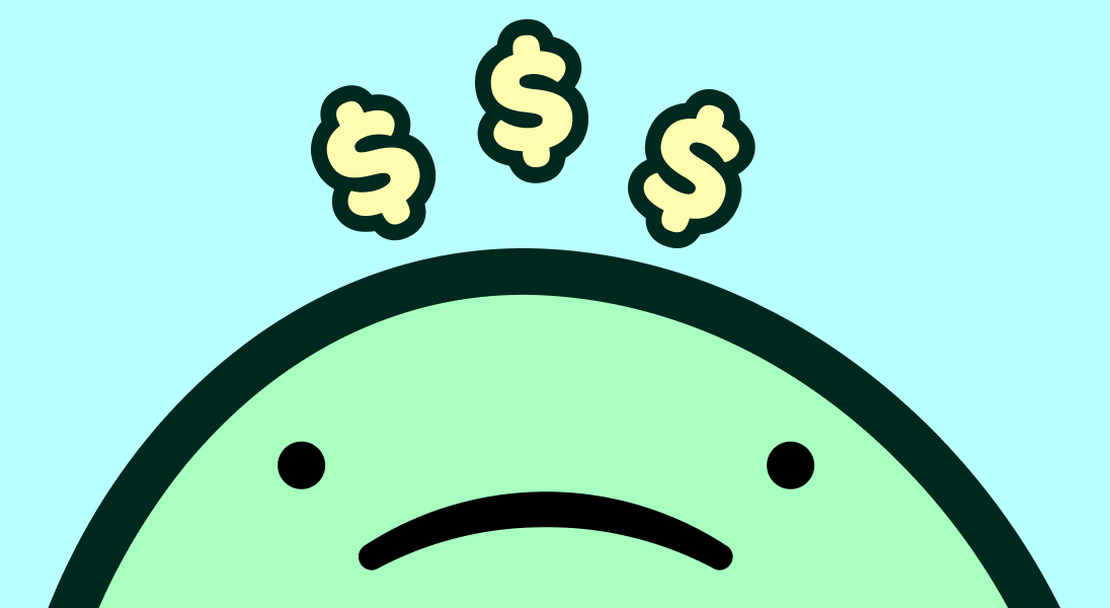
Resist Emotional Spending This Black Friday: 6 Retailer Tactics Unveiled
-
Beatriz Macuco
- November 27, 2024
Table of Contents
Have you ever come home from a Black Friday shopping spree, arms loaded with bags, only to wonder, “Why did I buy so much?” If so, you’re not alone. According to a recent survey of 2,000 consumers, more than half regretted their Black Friday purchases .
There’s nothing wrong with snagging deals during big sales like Black Friday, but it’s important to understand the sales tactics behind them so you don’t end up buying more than you need.
Black Friday is one of the most significant shopping events of the year, where retailers employ aggressive strategies to drive consumer spending. These tactics play on your emotions, making you feel like you’re getting unbeatable bargains. Yet when the excitement fades, you might realize you’ve spent more than intended on items you didn’t truly need.
By understanding these tactics, you can navigate the frenzy and make responsible purchasing decisions. Let’s dive into the strategies marketers use and explore the psychological impact they have on shoppers like you.
1. Urgency and Scarcity Tactics
These tactics tap into our natural instincts to seize opportunities before they slip away. They work because they trigger emotional responses that can short-circuit our rational thinking. They tap into our fear of missing out and our tendency to value things that seem scarce or fleeting. By creating a sense of urgency and competition, retailers encourage us to act quickly, often leading to impulsive purchases. It’s a psychological push that makes us prioritize immediate gratification over careful decision-making.
a. Limited-Time Offers
Create a sense of urgency that makes you feel like you have to act now or miss out forever. Imagine seeing a deal that says “Today Only: 50% Off!” Suddenly, that item you’ve been casually eyeing becomes a top priority. The ticking clock triggers a fear of missing out, pushing you to make a quick decision without your usual deliberation.
b. Rewards for the Fastest Customers
Amplify this effect by adding a competitive edge. Knowing that only the first 50 shoppers get an exclusive deal makes you want to be among them. It’s like a race where the prize is a fantastic discount, and no one wants to be left behind. This urgency can override your typical spending habits, leading you to make purchases you hadn’t planned on.
c. Scarcity and Limited Stock
Messages like “Only 3 left in stock!” play on our aversion to loss. The idea that an item is running out makes it more desirable, even if you weren’t initially that interested. It’s like the last slice of pizza—suddenly, everyone wants it. This perceived scarcity can prompt you to buy immediately, just to avoid the regret of missing out.
d. Countdown Timers
Add to the excitement by creating a high-pressure environment. When you see a deal that’s only available for the next two hours, it sparks a sense of urgency that’s hard to ignore. The countdown ticking away makes every minute feel precious, nudging you to complete your purchase before time runs out. This can lead to impulse buying, as the fear of losing the deal overshadows the need to thoroughly consider the purchase.
2. Value Perception Tactics
These tactics are all about making you feel like you’re getting an incredible deal, which can encourage you to spend more than you intended. They enhance your perception of value and savings. They tap into your desire to get the most for your money, making you feel like you’re making smart financial decisions. By highlighting discounts and manipulating price presentations, retailers encourage you to justify spending more, often on items you didn’t initially plan to buy. It’s a psychological nudge that makes opening your wallet feel like the right choice.
a. Deep Discounts and Doorbusters
Catch your eye with significant price cuts on popular items. When you see a product marked down by 50% or more, it feels like an opportunity too good to miss. This perceived savings can make you more willing to buy, even if you didn’t plan on purchasing that item.
b. Spend More, Save More
Promotions entice you to increase your total purchase to reach the next discount tier. For example, if spending $100 gets you 10% off but spending $200 gets you 20% off, you might add extra items to your cart to unlock the bigger discount. It feels like you’re maximizing your savings, but in reality, you’re spending more than you originally intended.
c. Bundling and BOGO Offers (Buy One, Get One)
Play on the idea of added value. Getting an extra item for free or at a discount makes the deal seem irresistible. You might end up buying more than you need because the offer feels like too good of a bargain to pass up. This tactic increases the retailer’s sales while making you feel like a savvy shopper.
d. Price Anchoring
Involves displaying the original price next to the discounted price. Seeing that an item was originally $150 but is now $65 makes the sale price seem like a steal. The original, higher price sets a mental benchmark, making the discount appear more significant and the deal more attractive.
e. Loss Leaders
Are items sold at a loss to lure you into the store or website. The goal is to attract you with a fantastic deal in hopes that you’ll purchase additional, full-priced items once you’re there. It’s a way to increase overall sales by getting you in the door with the promise of big savings.
f. Price Matching Guarantees
Build trust by assuring you that you’re getting the best deal available. Knowing that a retailer will match a competitor’s lower price reduces your incentive to shop around. This confidence can make you more comfortable making a purchase, even if you might find a better deal elsewhere.
3. Incentive and Reward Tactics
These tactics tap into our innate desire to get the most value out of our purchases. They make you feel like you’re getting more bang for your buck, encouraging you to spend more than you planned. They tap into your desire to maximize value and take advantage of “smart deals.” By offering incentives like free shipping, bonus items, or helpful add-ons, retailers make additional purchases seem not just tempting but practical. It’s a psychological nudge that makes you feel savvy and rewarded for spending a bit more, even if it means exceeding your original budget. This way, opening your wallet wider feels like the right—and rewarding—choice.
a. Free Shipping Threshold
Are a clever way retailers encourage you to spend a bit more. Imagine you have $45 worth of items in your cart, but free shipping kicks in at $50. You might add an extra item you didn’t originally plan to buy just to avoid the shipping fee. It feels like you’re getting more for your money, but in reality, you’ve spent more than you intended.
b. Bundling and BOGO Offers (Buy One, Get One)
Play on the same principle. By offering extra products or deals when you purchase more, retailers make you feel like you’re getting a bonus. It’s hard to resist the allure of getting something additional for “free” or at a significant discount. This tactic can lead you to buy items you didn’t initially consider because the perceived value is too good to pass up.
c. Up-Selling and Cross-Selling
Involve suggesting higher-end products or complementary items that enhance your initial purchase. When you’re about to buy a new phone, and the retailer suggests a protective case or an extended warranty, it seems practical. These suggestions often make sense in the moment, and because you’re already committed to buying, adding a bit more doesn’t feel like a big leap. Retailers use this moment to increase the total sale, capitalizing on your willingness to enhance your purchase.
4. Convenience and Ease Tactics
These tactics make shopping so effortless that you might end up spending more without even realizing it. They lower the barriers to making a purchase, making the shopping experience as smooth and hassle-free as possible. By eliminating obstacles like inconvenient store hours, the effort of finding deals, or extra shipping costs, retailers make it easier for you to say “yes” to buying. This seamless experience taps into our love for immediate gratification and simplicity, encouraging us to spend more because it’s just so darn easy. When shopping feels effortless, opening your wallet doesn’t feel like a big deal—it feels like the natural, convenient choice.
a. Extended Store Hours
Are designed to fit seamlessly into your schedule. By opening early or closing late, retailers give you more opportunities to shop at your convenience. This flexibility reduces any time constraints that might prevent you from visiting the store. With more chances to drop in, you’re more likely to make purchases, including those unplanned ones that catch your eye while you’re there.
b. Email and Social Media Promotions
Bring the deals straight to you, eliminating the need to hunt for discounts. When a tempting offer pops up in your inbox or social media feed, it’s hard to resist clicking through. These promotions simplify the shopping process by providing direct links to sales and exclusive deals. The ease of accessing these offers makes it more likely you’ll act on them, often leading to impulse buys because the opportunity is right at your fingertips.
c. Free Shipping
Removes one of the biggest hurdles in online shopping—the added cost of getting your items delivered. Knowing that you can have your purchases sent to your doorstep at no extra charge makes the decision to buy that much easier. It eliminates the second-guessing that comes with additional fees and makes online shopping more appealing overall. This convenience can encourage you to shop more frequently or to buy items you might have hesitated on if shipping costs were involved.
5. Personalized Offers
These tactics focus on reminding you of products you’ve already shown interest in, leveraging your prior browsing behavior to increase the likelihood of purchase. Personalization taps into the fact that you’re more likely to buy things you’ve already shown interest in. When retailers present you with products you’ve browsed before or suggest items similar to ones you’ve considered, they’re keeping those products fresh in your mind. This strategy reduces the effort you need to find something you like, making the shopping experience more convenient. By doing so, retailers increase the chances you’ll complete the purchase, as the items are already on your radar. It’s a subtle nudge that leverages your existing intent, making it easier—and more tempting—to hit that “buy now” button.
a. Customized Promotions
Are deals based on your shopping history or preferences. Ever notice how after looking at a new camera online, you suddenly receive an email offering a discount on that very item or related accessories? It’s not a coincidence. Retailers use your past behavior to present you with offers that are hard to resist because they’re exactly what you’re interested in. It feels personal and relevant, making you more likely to take advantage of the deal.
b. Personalized Recommendations
Take it a step further by suggesting products you might like based on your previous purchases or browsing history. When you’re shopping online and see a “Recommended for You” section filled with items that match your taste, it’s tapping into your preferences. This not only makes shopping more convenient by showing you items you might genuinely want, but it also increases the chances you’ll add more to your cart. It’s like having a personal shopper who knows your style, making it hard to say no.
c. Targeted Advertising
Involves those ads that seem to follow you around the internet, showcasing items you’ve shown interest in. You might have casually browsed a pair of shoes, and suddenly they’re popping up on your social media feed and other websites you visit. This constant reminder keeps the product fresh in your mind, increasing the likelihood you’ll go back and make the purchase. It’s a subtle nudge that leverages your existing interest, making the buy feel like a natural next step.
6. Attention-Grabbing and Engagement Tactics
These tactics are all about capturing your attention and sparking your interest, making it more likely that you’ll make a purchase. They effectively capture your attention and evoke emotions like excitement, curiosity, and even joy. By creating an engaging shopping experience, retailers make the process feel more like entertainment than a transaction. This emotional engagement lowers your guard and makes you more open to making purchases, often on impulse. It’s a psychological strategy that turns shopping into a fun and spontaneous activity, encouraging you to open your wallet without overthinking it. When shopping feels enjoyable and engaging, spending money feels less like a chore and more like a rewarding experience.
a. Flash Sales
Surprise you with sudden, short-term deals that create a sense of excitement and urgency. Imagine browsing your favorite online store and suddenly seeing a banner that says, “Flash Sale: 50% off for the next 2 hours!” This unexpected opportunity grabs your attention and creates a thrill, prompting you to act quickly before the deal disappears. The surprise element not only excites you but also interrupts your usual browsing habits, making you more susceptible to impulse buys.
b. Doorbusters
Are highly advertised deals designed to draw in crowds and generate buzz. These are the offers that people line up for hours before a store opens on Black Friday. The hype surrounding doorbusters creates a social phenomenon where everyone wants to be part of the action. The sheer excitement and energy of the crowd can be contagious. Even if you didn’t plan on buying that ultra-cheap TV, the buzz might entice you to grab one before they’re all gone. It’s hard to resist the allure of a deal that everyone else seems eager to get.
c. Email and Social Media Promotions
Use engaging and interactive content to keep you connected with the brand. Ever received an email with a catchy subject line like “Don’t Miss Out on Today’s Exclusive Deal!” or seen a social media post featuring a fun quiz or giveaway? These promotions are designed to engage you emotionally and cognitively, sparking curiosity and encouraging you to interact with the retailer. The more you engage, the more likely you are to explore their products and make a purchase. It’s like being invited into a conversation rather than being sold to, which feels more personal and less like advertising.
How To Shop Smart This Black Friday
As Black Friday approaches, keeping these six retailer tactics in mind can help you navigate the sales frenzy without falling into emotional spending traps. Remember, the urgency and scarcity you feel are often manufactured illusions, and those rewards or additional incentives are just extra clutter if you don’t actually need them. Recognize how urgency and scarcity push you to act fast, or how value perception strategies make deals seem too good to pass up. Be aware of the incentives and rewards that encourage you to spend more, and understand how convenience and ease can make shopping effortless yet tempting. Personalized offers tailor deals to your interests, while attention-grabbing tactics keep you engaged and ready to buy on impulse. By staying aware of these strategies, you can make informed decisions and resist the urge to overspend.
Here are a few key takeaways to keep in mind:
- Make a Wishlist: Identify and prioritize the items you truly want before the sales begin. This helps you stay on track and reduces the temptation to buy things you don’t need.
- Stay Focused: Stick to your wishlist and avoid impulse buys triggered by limited-time offers or flash sales.
- Research Deals: Compare prices and verify discounts to ensure you’re truly getting a good deal. Don’t rely solely on the advertised savings.
- Pause Before Purchasing: Take a moment to consider if you really need the item before adding it to your cart. A short pause can prevent unnecessary spending.
- Be Mindful of Personalization: Recognize when personalized offers are nudging you to buy more than you intended. Just because an offer is tailored to you doesn’t mean you need every suggested item.
For more in-depth strategies on controlling your spending habits, check out our guide on how to stop emotional spending . By combining awareness with practical tips, you can enjoy the best of Black Friday without the regret of overspending. Happy shopping, and may your purchases be both smart and satisfying!


